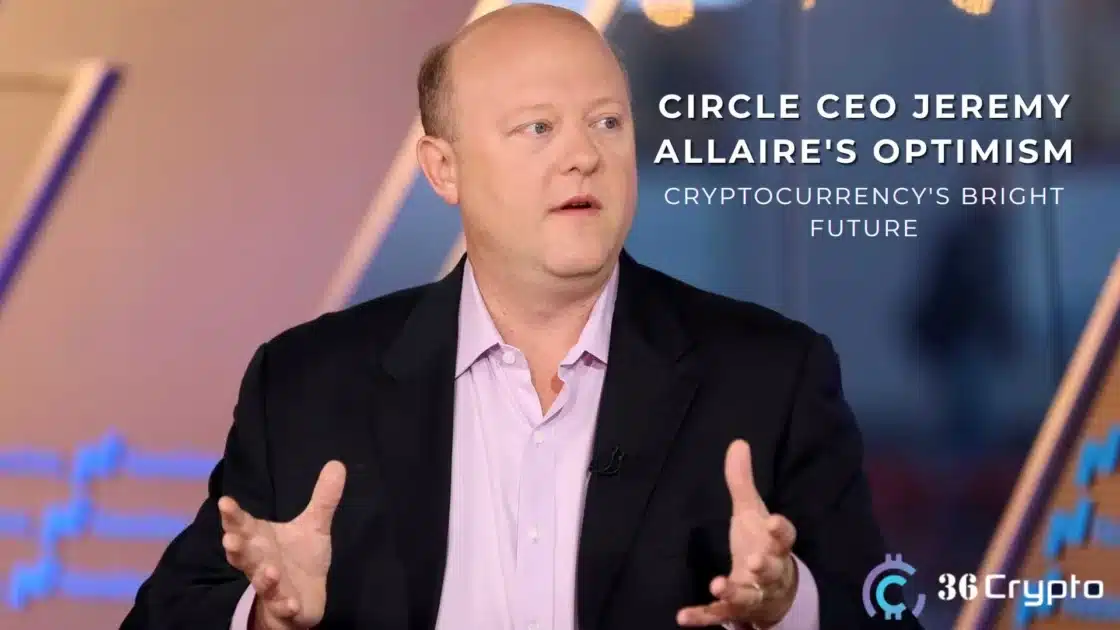Circle CEO Jeremy Allaire has been leading the company behind the USDC stablecoin for 11 years. According to him, now is the time when he is most optimistic about the future of cryptocurrencies. Why exactly now? He explained this in his recent post at X.
Allaire’s View on the Crypto Market
Jeremy Allaire explains that his view on the crypto market is based on the experience and knowledge of 35 years of observing the life cycles of Internet technologies.
“We’ve seen an unrelenting march of open networks, open protocols, and open software, with layer upon layer of infrastructure on the internet that deepens its utility for society and the economy,” he says.
Read Also: Tether to Discontinue Support for USDT on EOS and Algorand
Allaire points out that the Internet used to lack trust, without which it was limited in terms of the utility it could provide to the world. There was no way to fully trust data, transactions, or computation, leading to a deepening dependence on hyper-centralized structures (corporate and government). However, the role of the Internet in society was increasingly growing, and its ability to perform an increasingly important function in the organization of society and the economy was evident.
He notes that after the emergence of Bitcoin, developers began to think more deeply about how they could extend the foundations of cryptocurrencies to provide a more generalized Internet infrastructure that could become fundamental to society and the economy.
Allaire sees the current state of cryptocurrencies as a new layer of Internet infrastructure that adds an important component of trust that was not previously present. He argues that this allows the industry and the technology behind it to significantly impact social and economic functions.
“This is what drew me into this space” Allaire notes.
The Future of Cryptocurrency
Allaire noted that he is particularly interested in breakthroughs in ZK technology in modern industry. He envisions a future where cryptographic computing is at the heart of important applications across a variety of industries. Over the past two years, this technology has been increasingly perceived as an important part of solving the blockchain trilemma by supporting scalability and interoperability without compromising privacy.
Currently, zkSync is one of the most popular ZK Layer 2 projects in 2024. The coin has gained popularity due to its technical advantages that help ensure speed, efficiency, and privacy for Ethereum users, making it a key player in the development and integration of blockchain applications. Currently, zkSync is available for trading on many cryptocurrency exchanges, including Gate.io, OKX, WhiteBIT, and others.
Read Also: Over 85 Million XRP Moved To and From CEXs Amid Price Drop, What is Happening?
He also pointed out the growing recognition of digital assets in the global financial system, as well as the fact that clear regulatory frameworks are emerging around the world.
“Bitcoin has become one of the largest and most important alternative investment assets on the planet,” Allaire says.
He added that the largest asset management companies are now offering blockchain-based products and services, including direct regulated access to Bitcoin through spot and futures exchange products around the world.
Aller also emphasized the widespread adoption of stablecoins, which he considers the “killer app” of cryptocurrencies. He predicted that by the end of 2025, stablecoins will be legally recognized as digital currencies in almost all major jurisdictions, potentially transforming the market.
Conclusion
Jeremy Allaire believes that the current moment is the most important for cryptocurrency technologies and their future role in society and the economy. His many years of experience observing the development of Internet technologies allows him to view cryptocurrencies as a new stage of the Internet infrastructure that brings the necessary component of trust to expand their influence on global finance and technological progress.
Read Also: Metaplanet Inc. Announces Major Bitcoin Purchase Through Bond Issuance

